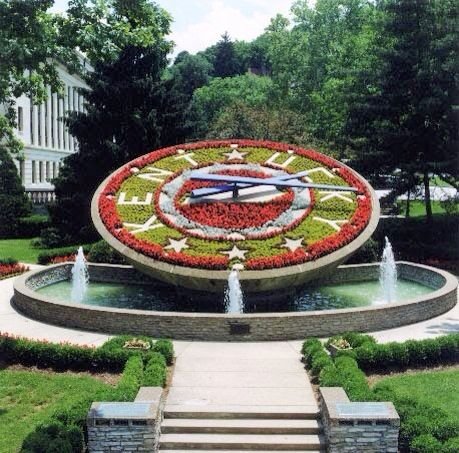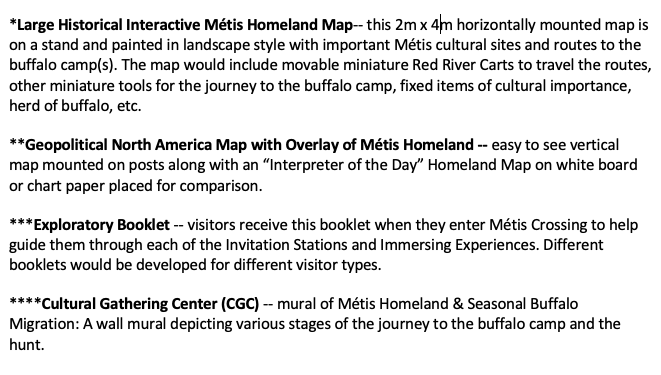It’s time for the last in the series of three posts from the 2022 #InterpDesign twitter platform annual highlights. The previous post dealt with the power of graphics in playful interpretation which helps with serious learning. We also had fun with the effective use of infrastructure and who can’t forget the dog library. Now we delve into satisfying various visitor needs.
If you follow us already then this will be a tweet refresher/reminder with some added bonus expansion on the original limited commentary. If you don’t follow us yet (what are you waiting for!) as our aim is to inspire you with an eclectic range of thought -provoking material that you can apply to boost your visitors’ site experience. If your visitor experience team needs a spark of new perspectives on a specific issue or just general experience enhancement as a kick off to 2023, then get in touch with us at contact@eidcoaching.com A roundtable discussion is only a Zoom meeting away.
Design WITH Children! Take Curiosity Seriously!
How do you go about sparking a “lifelong love of heritage” in the youngster demographic? Perhaps by transforming an heritage property into a first-of-its-kind experience designed for AND with youngsters. What if rooms, in a richly decorated home, best known for its furnishings, became spaces that celebrated the escapades and challenges of childhood across the centuries, especially the realities of life for children who were employed?
courtesy: National Trust
Certain spaces in the Children’s Country House Museum run by the National Trust in England have been redone to portray the child’s journey through the ages. Daring young ‘sweeps’ can take on the chimney climb and crawl into the darkness. Others can venture down a Victorian mine tunnel or get involved with activities to see what life was like for children working in domestic service.
Certain spaces in the museum basement have been transformed into interactive historic house interpretation like the World Below and the Pantry of Destruction. In the former, visitors can prepare toy food and make clay models inspired by the house’s plasterwork. In the latter Pantry of Destruction children are engaged in the basics of heritage conservation with an interactive display on heritage hazards such as floods, theft and pests, to counteract elements of ‘destruction’. The portrait photo booth allows visitors to pose for photos using symbolic props that echo the symbols found in historic portraiture associated with 17th century Jacobean interiors.
What about devising & testing ideas aimed at "serving the needs of children with families, not families with children?” The Children’s Country House Museum did just that -following a two-and-a-half-year renovation, by working with 100 ambassadors, up to age 12. They continue to work with children to further develop the Garden and decide what the future should look and feel like.
They claim this is the world’s first stately home entirely reinterpreted for children. The property has removed almost all ropes and barriers, allowing visitors to explore the space freely, with colour coding used to signal which objects can be touched. A rotating mirror allows visitors to pick out details in the paintings and plasterwork that decorate the stairs.
In another twist, the National Trust created a second-hand shop selling children s’ pre-loved items including books, toys and clothing. This exemplifies the reuse principle as opposed to outright consumerism and reinforces a certain value system integral to conservation.
Fostering Connections
“Museums in general are places for community and dialogue, and are uniquely positioned to foster connections among people using art immersion as a stimulating factor.”
This was stated by Lucy Stewart, the Associate Curator of Education at Carnegie Museum of Art, after she led the launch of a Mindful Museum at her institution. Having read the Alliance of American Museums (AAM)’ Creative Aging report, that concluded the over 55 demographic was being ill served by museums, she responded with “a call to action.”
Courtesy : Carnegie Museum of Art
Their market research discovered: “There are more than 20,000 people aged 55+ within walking distance of Carnegie Museum of Art.” How many of you know the numbers of certain age groupings within a close distance of your centre that you could call “neighbours?” A new form of outreach, and forgotten target market, perhaps?
Two main thrusts from the report were apparent: the need for seniors to be able to express themselves and to be active in a safe, comfortable, and stimulating environment. A sense of comfort also meant sitting in chairs in the galleries, during a planned time slot with a reserved space that removed any feeling of being rushed.
Art Paths or tours of the museum’s gallery, were optimized for movement and meditation; art history and drawing classes tapping into art therapy; and in-person chair yoga instruction were offered. For more on this check out https://jingculturecrypto.com/carnegie-museum-of-art-mindful-museum/
Lucy Stewart’s previous quote applies to more than art museums. It has universal appeal among the heritage sector, because if you replace the word museum with park or historic site and the word art with sense of place as in sense of place immersion, it still rings true.
However, while fostering connections only among people is a worthwhile goal, at this juncture in our earth’s demise, fostering connections with the earth must take precedence. A recent book called Earthwalks an alternative nature experience by Steve Van Matre and Associates addresses this connection outcome up front, with structure and purpose. Earthwalks are not simply another outdoor leisure pursuit. Their focus is on generating feelings of joy, kinship, reverence and love with the earth. Heritage sites need to be sponsoring these Earthwalks developed by The Institute for Earth Education (www.ieetree.org). EID can help you set up a training session for your staff so they can regularly lead this outdoor experience. See our blog post for more details https://eidcoaching.com/blog-main/2020/4/24/earthwalks-using-our-senses-to-deepen-our-feelings-for-the-earth
Courtesy Merrion Hotel website
Palette and Palate
While on the artistic flair bent, the Art Tea event is a feast for the eyes & stomach at Dublin hotel, the Merrion where hanging masterpieces inspired chefs to create pastries as mini art collection edibles. At the special event, visitors would get to consume them while contemplating the miniature artwork prints that accompanied the edibles so you knew what or who you were eating. Then you might be intrigued to see the real thing in the gallery. Have you encouraged any of your curated collections or natural heritage specimens to inspire your café menu? Any high- end pastry chef/restaurant partnerships coming to mind with waterfowl carvings perhaps?
While attending a Salmon Arm, British Columbia Art Show featuring Indigenous artists we were treated to tea and cookies at the end of the opening that blew me away because it was so apropos to the gathering and the earth relationship being expressed in the artworks. Just wanted to illustrate that it doesn’t have to be fancy just connected to the essence of the story and playing a reinforcing role
What’s your Narrative?
The Fort Worth Zoo in Texas wanted to inject their digital presence with a contemporary, playful look and feel that would reinforce the zoo as a destination for fun and excitement, while simultaneously presenting the animals in their charge with dignity, through captivating imagery and language that promotes exceptional care. Their commitment to species survival, conservation, animal welfare, and education is placed at the forefront of the digital guest experience. Here is the image that appears as part of their twitter handle:
Courtesy : Fort Worth Zoo Twitter
What is presently at the forefront of your guest experience and does it match to what you want it to be? In maximizing this narrative, the Fort Worth Zoo reports that new website is already driving donations, animal adoption, and other forms of vital support and giving. They are empowering visitors to join a movement toward wildlife and habitat protection by engaging in events, where donations are solicited for their vital projects and causes.
While reading this, I could not help but wonder how our national and state/provincial parks could benefit from a visitor building lesson, by reimagining their web presence to empower visitors effectively to join a movement toward wildlife and habitat protection. Visitors pay their admission but beyond that they are never (in my experience) ever asked to contribute towards any research or wildlife monitoring or conservation work in the park. Budgets are not overflowing for this type of work so why don’t we give visitors the chance to participate financially and provide them the feeling of benefiting their parks-their wild spaces. A dream worth pursuing…
Hopefully this 3-part twitter highlights that rambled down diverse pathways has provided you with some new approaches and perspectives. We at EID want to share what we have learned along the way as well as the ongoing flurry of innovative and engaging approaches we constantly search for. However, a solid plan tried to an outcome-driven mission is paramount. Having interpretive passion without direction is like being an octopus on roller skates. You can be sure there will be plenty of movement but you won't know where you are headed, making it difficult to measure success.
If you have problems or just need a boost of energy - we have ways to help you solve them or provide revitalization. Get in touch with us for a coaching session.
<a name="comment"></a>



































































































































